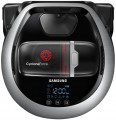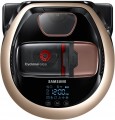Fine filter
The presence of a
HEPA fine filter in the vacuum cleaner; also in this paragraph, the specific class of this filter is often specified.
HEPA (High Efficiency Particulate Absorbing) filters are designed to purify the air from the smallest mechanical contaminants — up to tenths of a micron in size. It allows you to trap not only fine dust but even bacteria. For comparison: the size of most bacteria starts at 0.5 microns, and the effectiveness of HEPA filters is evaluated by the ability to retain particles with a size of 0.1 – 0.3 microns. The most advanced such filters (
class 13 and above) are able to remove more than 99.9% of these particles from the air. Here is a more detailed description of the different classes:
— HEPA 10 – traps at least 85% of particles with a size of 0.1 – 0.3 microns;
— HEPA 11 – at least 95% of such particles;
— HEPA 12 – not less than 99.5%;
— HEPA 13 – not less than 99.95%;
— HEPA 14 – not less than 99.995%;
Note that pollution with a size of 0.1 – 0.3 microns is the worst-kept by HEPA filters, so with particles of other sizes (both larger and smaller), the efficiency of such elements will be even higher.
Regarding the choice for this parameter, it is worth noting that, in fact, it does not always make sense to pursue a high filtration class. For example, during wet cleaning with a washing vacuum cleaner (see abov
...e), the HEPA filter, in fact, is not needed at all (in many models, it is recommended to remove it altogether for such cases). So if you plan to use such a vacuum cleaner mainly for washing, you can ignore this parameter. Another specific case is industrial units (see "Type"): they are often used for rough cleaning of large debris, where thorough air filtration is not required.Cleaning area
Cleaning area for which the robot vacuum cleaner is designed.
It is the maximum size of the room that the device can effectively process without the need to empty the dust container or charge the battery. It is worth choosing according to this parameter with a certain margin — this will give an additional guarantee in case of various emergencies. On the other hand, you should not take too much stock: after all, a large cleaning area requires more capacious batteries and capacious dust collectors, which significantly affects the dimensions, weight, and most importantly, the price of the vacuum cleaner.
As for specific figures, the most modest models nowadays are designed for 45 – 60 m2 — this corresponds to an average apartment with 1 – 2 rooms. And in the most advanced and heavy devices of this type, the cleaning area can be 300 m2 or even more.
Crossing threshold
The highest height of thresholds and various small obstacles that the robot cleaner can effectively overcome.
Most modern robots are able to effectively cope with obstacles with a height of 10 to 18 mm — this allows at least without problems to cross the edges of carpets, and small height differences at the boundaries of rooms (due to the difference in the type of coating), etc. But the models where the indicator is 20 mm or more are already referred to as robots capable of
crossing high thresholds. However, even in such devices, the permissible height of obstacles does not exceed 30 mm. It is due to the fact that to overcome high obstacles, in particular, large wheels and high ground clearance are needed — and these features, in turn, increase the overall height of the robot, make it difficult to move under furniture and other low-lying objects, as well as reduce suction efficiency. On the other hand, even
thin robots, whose height does not exceed 70 mm, can have very good crossing ability — for some of them, the maximum threshold height is about 25 mm.
Battery voltage
The rated voltage of the battery used in the vacuum cleaner with the corresponding type of power supply (see above).
Initially, manufacturers select the characteristics of the battery (including voltage) in such a way that the vacuum cleaner can be guaranteed to deliver the power claimed in the specifications. Therefore, when choosing this indicator often does not play a decisive role. However, it can also be useful in such cases — for the most reliable comparison between models with different battery capacities in ampere-hours. See "Battery capacity" for details.
In addition, voltage data can be useful during operation — for example, to find a spare/replacement battery or a third-party charger.
Noise level
The noise level produced by the vacuum cleaner during operation. Usually, the value for normal operation at maximum engine power is indicated here. With less power, the loudness of the unit may be lower, but the key is precisely the maximum indicator.
Regarding specific numbers, keep in mind that the decibel used to measure the noise level is a non-linear quantity. Therefore, it is worth evaluating specific indicators using special comparative tables. In general, vacuum cleaners are quite noisy appliances; so in this case, models are considered quiet if this indicator
does not exceed 65 dB — this is the level of a loud conversation between 2 – 3 people at a distance of 1 m. The quietest of these models give out only 40 dB — this is the average volume of a person’s speech in normal tones (and the minimum volume allowed for constant noise sources in living quarters during the day). For louder units, the comparison table looks like this:
—
66 – 70 dB — loud conversations between several groups of people at a distance of about 1 m;
—
71 – 75 dB — the volume of a cry or laughter in full voice at a distance of about 1 m;
—
76 – 80 dB — the volume of a mechanical alarm clock or the engine of an old truck;
—
more than 80 dB — a very high noise level, exceeding the level of a loud scr
...eam; when working with a vacuum cleaner having such specifications for a long time, it is highly desirable to use hearing protection.
Also note that the noise level largely depends on the engine power, as well as some other features (for example, it is strongly affected by the presence of an aquafilter — see "Dust collector"). At the same time, there is no hard connection here, and units with a similar set of specifications can differ markedly in actual loudness. In such cases, when choosing here, it is worth proceeding from the fact that a quieter vacuum cleaner will be more comfortable to use. However, it will most likely cost noticeably more.
